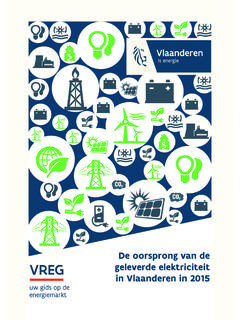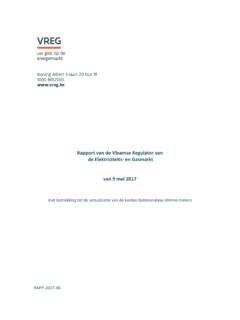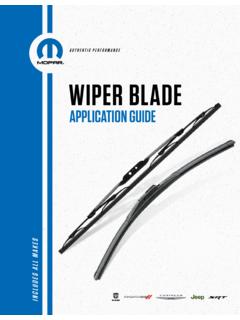Transcription of Risk assessment of pushing and pulling (RAPP) tool
1 Health and Safety ExecutiveRisk assessment of pushing and pulling (RAPP) toolGuidance Note GS38 HSE BooksINDG478 Published 2016 Health and Safety ExecutiveRisk assessment of pushing and pulling (RAPP) toolIntroduction This tool is designed to help assess the key risks in manual pushing and pulling operations involving whole-body effort, eg moving loaded trolleys or roll cages, or dragging, hauling, sliding or rolling loads. It is intended to be used alongside the Manual handling assessment charts (the MAC tool)1 which helps assess lifting and carrying operations, and follows a similar approach to that tool. It is aimed at those responsible for health and safety in workplaces and will help you to identify high-risk pushing and pulling activities and check the effectiveness of any risk-reduction of the tool There are two types of pushing and pulling operations you can assess using this tool: moving loads on wheeled equipment, such as hand trolleys, pump trucks, carts or wheelbarrows (Section A); moving loads without wheels, which might involve actions such as dragging/sliding, churning (pivoting and rolling) and rolling (Section B).
2 For each type of operation there is a flow chart, an assessment guide and a score flow charts provide an overview of the risk factors and assessment process, while the assessment guides provide information to help you determine the level of risk for each tool is not appropriate for assessing pushing and/or pulling operations involving: just the upper limbs, eg pushing buttons/knobs, pulling levers or moving loads which are on a conveyor (see Upper limb disorders in the workplace HSG602); just the lower limbs, eg pushing on pedals, or with the feet; powered handling of the tool may not comprise a full risk assessment .
3 HSE s guidance booklet L23 Manual handling. Manual Handling Operations Regulations 1992: Guidance on Regulations3 contains more information on conducting full risk assessments. Always consider individual and psychosocial issues when completing the RAPP score 1 of 15 How to complete an assessment Spend some time observing the workers and the work activity to ensure that what you are seeing is representative of normal working practice. Always consider the worst-case scenario . Consult employees and safety representatives during the assessment process. Where several people do the same activity, make sure you get the views of workers about the demands of the operation.
4 Select the appropriate assessment (ie pushing and pulling wheeled equipment or pushing and pulling items without wheels). If both types occur, consider them separately. Ensure you read the assessment guide before you make your assessment . Follow the appropriate flow chart and assessment guide to determine the level of risk for each risk factor. The levels of risk are:G = GREEN Low level of riskAlthough the risk is low, consider the effect on vulnerable groups such as pregnant women or young workers, where appropriate. A = AMBER Medium level of riskExamine tasks closely. R = RED High or very high level of riskPrompt action needed.
5 This may expose a significant proportion of the working population to risk of injury. P = PURPLE UnacceptableSuch operations may represent a serious risk of injury and must be improved. Enter the colour band and corresponding numerical score in the appropriate column of the score sheet. Enter the remaining task information asked for on the score sheet. Add up the scores to obtain the total score for the operation. The total scores help prioritise those activities/operations that need most urgent attention and help check the effectiveness of any risk-reduction measures. The colour bands help determine which risk factors of the operation require attention.
6 The scores can be used for comparison purposes but the total scores do not relate to specific action tasks require attention, first look for solutions where it is reasonably practicable to eliminate the hazard, for example through redesign of the work or automation of the task. Where these measures are not practicable, identify how tasks might be improved to avoid or reduce those factors that score red. Then consider how to reduce the amber scores. Risk assessment of pushing and pulling (RAPP) tool Page 2 of 15 Health and Safety ExecutiveSection A: pushing or pulling loads on wheeled equipment Work patternCondition of equipment6 Hand gripFloor surface7 PostureBObstaclesalong theroute8 Other factors9 NOTETHE COLOUR AND NUMERICAL SCORE AND INSERT ON SCORE SHEETLow0284 MediumHighVery highLoad weight1234 Travel distance5 StartComplete the score sheet on page 8 Good0 ReasonablePoorGood036 ReasonablePoor12 Good0 ReasonablePoor13 Short0 MediumLong13 None0 OneTwo or more12 Good0 ReasonablePoor24 Good0 ReasonablePoor14 Good0 ReasonablePoor23 Risk assessment of pushing and pulling (RAPP)
7 Tool Page 3 of 15 Health and Safety ExecutiveAssessment guideA-1 Type of equipment/Load weight (kg) Identify the type of equipment used small, medium or large (pages 4 and 5). If different types of equipment are used to move loads, do an assessment for each type. If more than one piece of loaded equipment is moved at a time (eg two trolleys), assess the total load moved. Find out the total load moved (weight of the equipment and weight of loads carried) from labelling, by asking the workers or by weighing. If the same equipment is used to move different loads, then assess the equipment with the heaviest load that is likely to be moved.
8 The illustrations in each section are only a guide to help you they are not comprehensive. Small with one or two wheels: eg wheelbarrows, wheelie bins or sack trucks. With this equipment the worker supports some of the load. Less than 50 kgLow G/050 kg to 100 kgMedium A/2100 kg to 200 kgHigh R/4 More than 200 kgVery high R/8 Load exceeds equipment s rated capacity (manufacturer s recommended maximum weight) UnacceptableP Medium, with three or more fixed wheels and/or castors: eg roll cages, Euro bins. Less than 250 kgLow G/0250 kg to 500 kgMedium A/2500 kg to 750 kgHigh R/4 More than 750 kgVery high R/8 Load exceeds equipment s rated capacity (manufacturer s recommended maximum weight)UnacceptableP Risk assessment of pushing and pulling (RAPP) tool Page 4 of 15 Health and Safety ExecutiveLarge, steerable or running on rails: eg pallet truck or overhead rail than 600 kgLow G/0600 kg to 1000 kgMedium A/21000 kg to 1500 kgHigh R/4 More than 1500 kgVery high R/8 Load exceeds equipment s rated capacity (manufacturer s recommended maximum weight)Unacceptable P Note.
9 If the load exceeds the rated capacity of the equipment then this is classified P Unacceptable. In this case, either the weight must be reduced or suitable equipment provided. Do not proceed until this has been improved. There is no score for P on the flow chart or score sheet. A-2 PostureObserve the general positions of the hands and the body during the G/0 Reasonable A/3 Poor R/6 Torso is largely upright, and Body is inclined in direction of exertion, orBody is severely inclined, or worker squats, kneels or needs to push with their back against the load, orTorso is not twisted, andTorso is noticeably bent or twisted, orTorso is severely bent or twisted, orHands are between hip and shoulder heightHands are below hip heightHands are behind or on one side of body or above shoulder heightRisk assessment of pushing and pulling (RAPP)
10 Tool Page 5 of 15 Health and Safety ExecutiveA-3 Hand gripObserve how the hand(s) grip or contact the equipment during pushing or pulling . If the operation involves both pushing and pulling , assess the hand grip for both G/0 Reasonable A/1 Poor R/2 There are handles or handhold areas which allow a comfortable power grip for pulling or comfortable full-hand contact for pushingThere are handhold areas, but they only allow a partial grip, eg fingers clamped at 90 , or partial hand contact for pushingThere are no handles or the hand contact is uncomfortable A-4 Work pattern Observe the work, noting whether the operation is repetitive (five or more transfers per minute) and whether the worker sets the pace of work.















